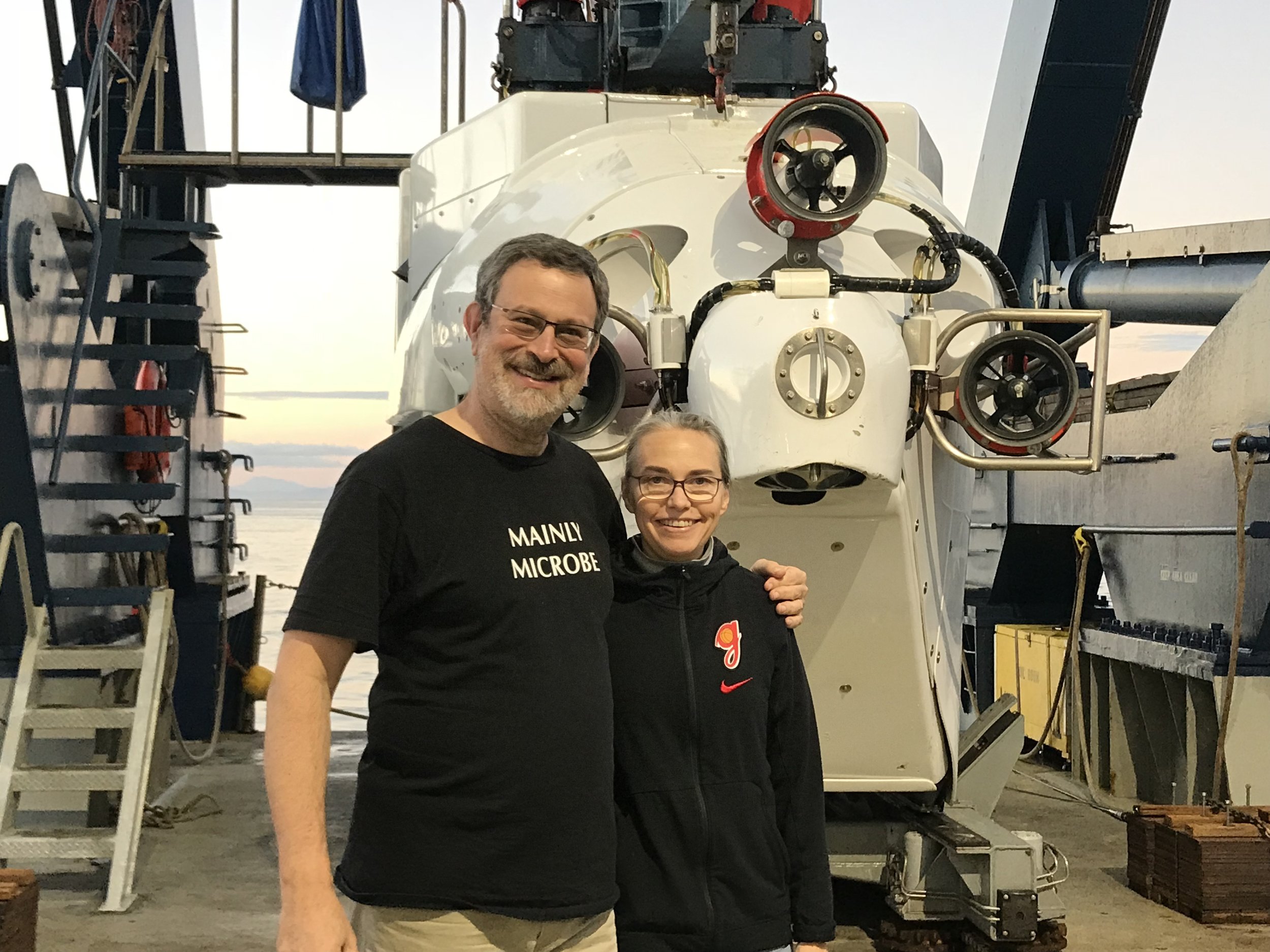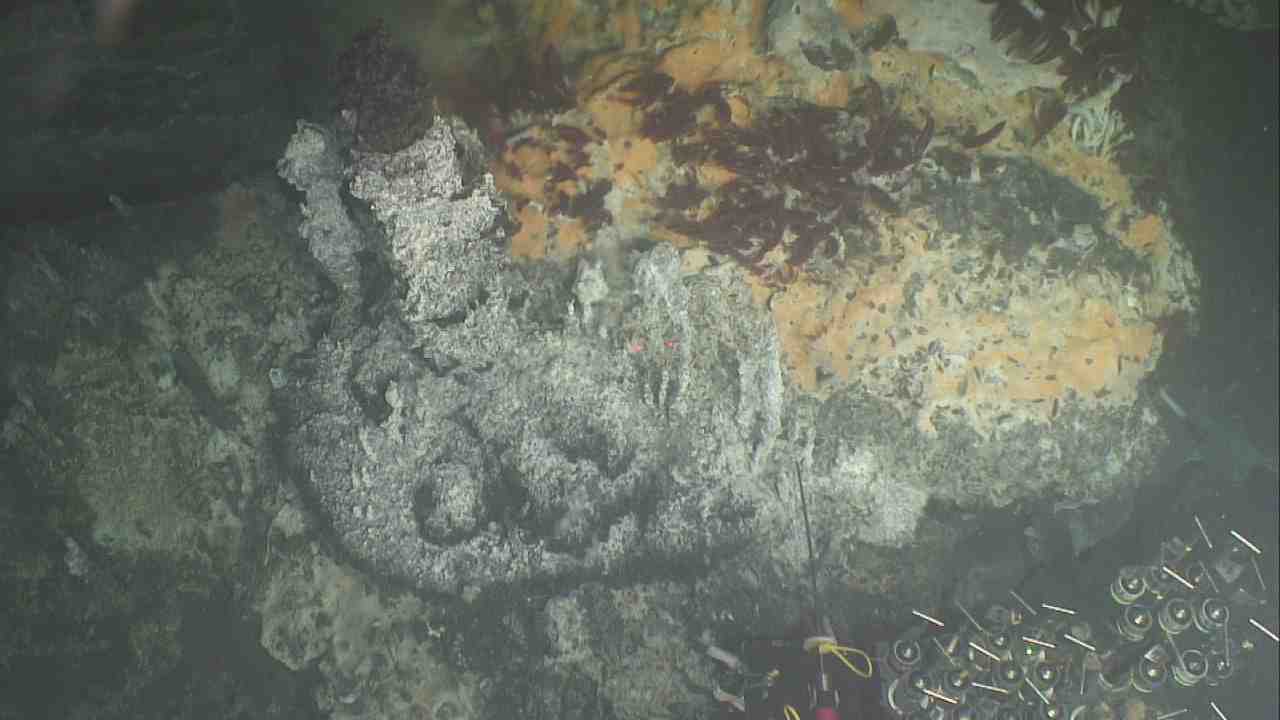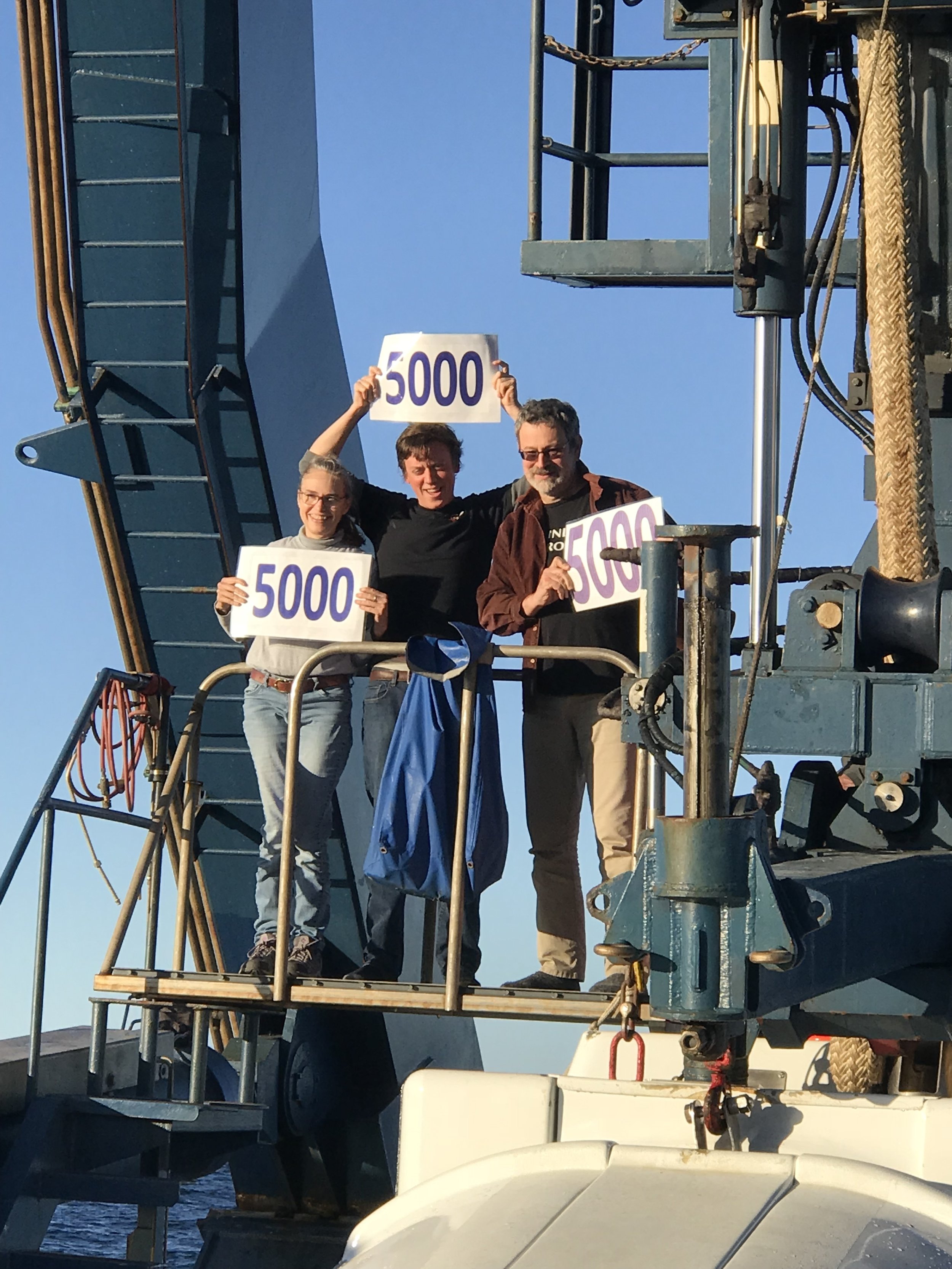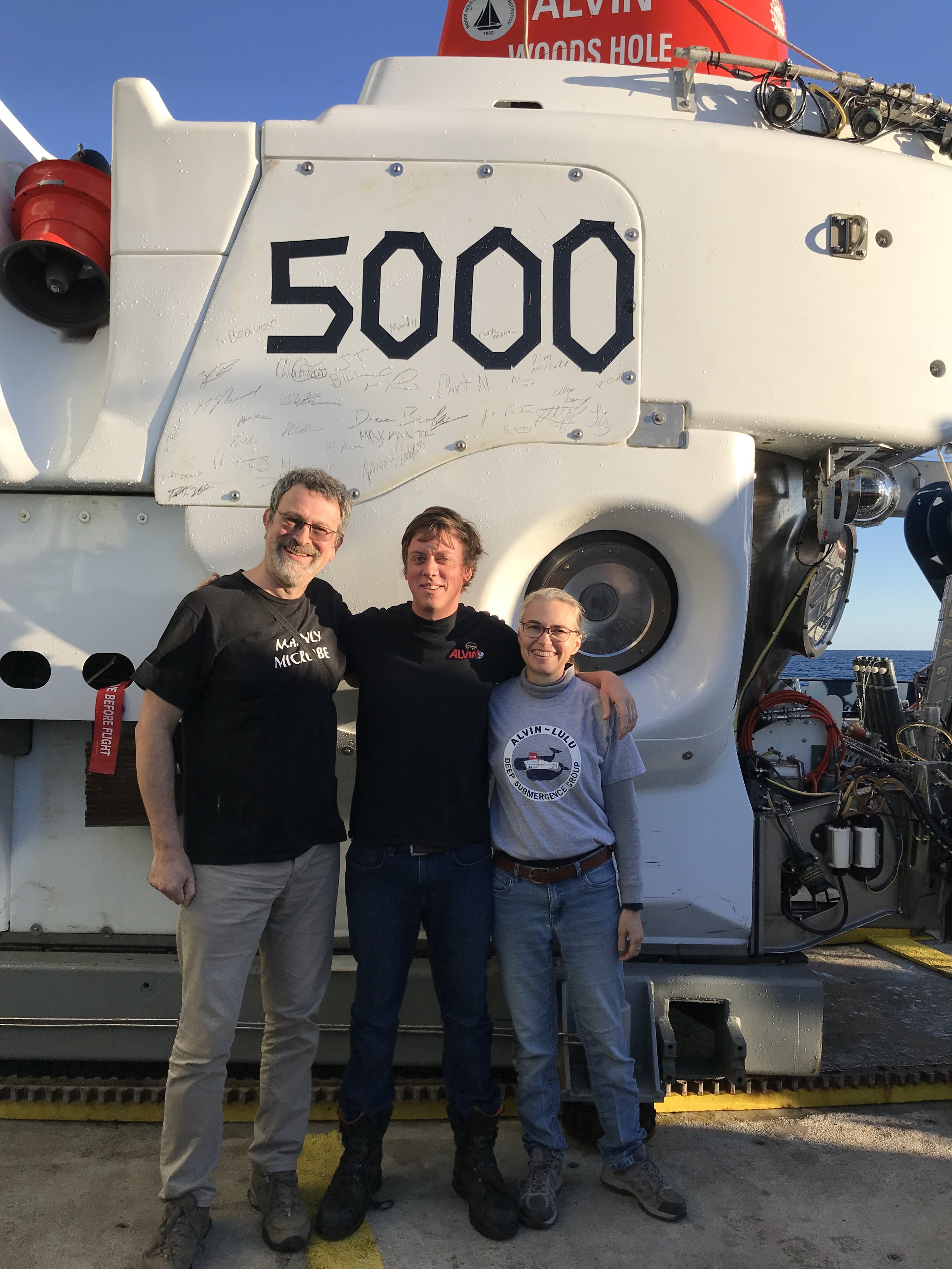September 22, 2020
Follow along as we highlight some previous expeditions, exploring methane hydrates in the deep ocean. Read part 1 and part 2. Part 3 is titled "Five Thousand Dives" and was written by Dr. Samantha Joye. This post originally appeared online here.
FIVE. THOUSAND. DIVES.
AT 42-05 | 25 November 2018
Five. Thousand. Dives.
The ALVIN is an incredible tool for doing deep ocean science. This versatile human occupied research vessel gives us eyes on the bottom and provides an unmatched perspective and appreciation for the habitat. ALVIN celebrated its 50th anniversary in 2014 and 25 November 2018 marked another incredible milestone: ALVIN dive 5000. So much history has been made in the ALVIN, I am so thrilled to be a part of dive 5000.

As odd as it may sound, I feel at home in the ALVIN. I am always excited and eager to have the opportunity to dive. I find myself bubbling over with energy, wondering what we will see and imagining we will discover. I still find it incredible that diving to the bottom of the ocean is a part of my job.

Today for dive 5000, Andreas Teske and I will be exploring sites in the Guaymas Basin. ALVIN working at the bottom is a very efficient and impressive – if not jaw dropping – thing to be a part of. I find myself awed when the pilot pulls off a circus maneuver to get precisely the sample we needed.

What is it like to dive and work in the ALVIN? In a word, it is intense. We embark on a dive with a long list of tasks to complete and samples to collect. Dive plans are always ambitious because we have to make the most out of every sampling opportunity on the bottom. The work we do at the seafloor involves using ALVIN’s robotic arms to collect samples and deploy instruments. It is an incredible operation to witness and getting to the point of sampling is a complicated process (see Sentry ‘mapping the bottom’ blog for context).

Today’s dive was incredible. Not because it was dive 5000, but because it was a discovery-filled, jaw-left-agape ALVIN experience. I still cannot believe what we saw today. We worked a part of the Cathedral site that we have studied before and that area was stunning enough. And then we went exploring and it was beyond fantastic.
We saw a sonar reflection and headed towards it. What we found there was a massive flange with numerous venting chimneys surrounded by a large field of Riftia and microbial mats.

The terraces were amazing. Mineral towers rose from the base in a variety of shapes and forms. Three large discharge points were clear and even more visible upon close inspection. It was a sight to see. We sampled four types of discharge chimneys on this dive. Consolidated sediments that were saturated with oil. Oil saturated metal sulfide chimneys and cleaner metal sulfide chimneys from the terrace site.

Fluid discharge from the mound generated shimmering water that obscured the features behind it. In one of the images, I realized later that an octopus was hidden behind the shimmering water. Do you see it? So many things are only visible in the pictures we shoot from ALVIN well after the dive. Often, I see something significant some time later.

Given the significance of Alvin dive 5000, we took several pictures commemorating the event at the bottom of the Guaymas Basin. We took this picture at the edge of the terrace, where the Riftia field began. I have never seen so many Riftia – the field went on as far down the fissure as we could see.

After the dive, we had a celebration on the surface. ALVIN once again delivered a bountiful collection of animal, rock, and microbiological samples. It was an incredible day.
Dive 5000 dive team disembarks from ALVIN (L to R): Mandy Joye, Danik Forsman (ALVIN pilot), Andreas Teske (picture by Rebecca Rutstein).

Dive 5000 dive team in front of ALVIN with signed 5000 logo (L to R): Andreas Teske, Danik Forsman (ALVIN pilot), Mandy Joye (picture by Rebecca Rutstein)


















 back to top
back to top